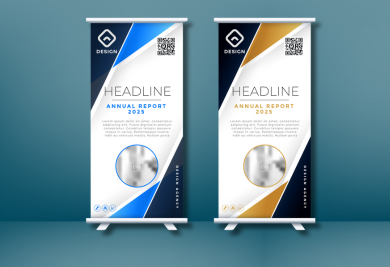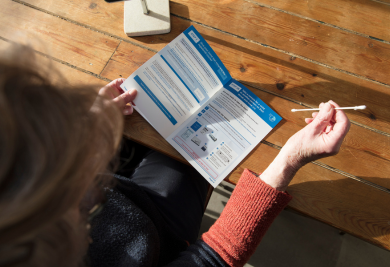
If one day you have been forced to make choices regarding paper weight and refinement without really knowing what that was all about, you are not alone. We get our fair share of phone calls and chat questions regarding these matters, so it is time for a blog post to elucidate this matter.
For any product on our website, the configurator will offer you the possibility to pick between a variety of paper weights, like this:
As you may have guessed, paper weight is expressed by its grammage, and the higher the grammage, the thicker and sturdier the paper will be. By convention, grammage is the weight per square meter of a sheet of paper, and its notation is gsm, g/m2, or simply g. For instance, a sheet of one square meter of 300g paper will weigh 300 grams. Depending on the feel that you want your product to have, and the image that you want it to reflect, some papers will be more appropriate.
For instance, we offer business cards in three paper weights: 230g, 260g, and 300g. Printing business cards on 105g or 130g paper for instance would make absolutely no sense as they would lose solidity, and would get crumbled when manipulated and stored. When choosing between 230g, 260g, and 300g for your cards, it is up to you to decide whether you care more about saving some money (in which case you’d go for 230g), about having a very premium feel (in which case you’d go for 300g), or having something that is in between (260g). Quite similarly, it would not make sense to print posters on heavy 300g paper, as that would be very difficult to hang.
To visualize the difference between the paper weights we offer and their effect on sturdiness, check out our informative videos on Vimeo.
In addition to paper weight, you will be required to make a decision as to whether you want your artwork to be printed on paper that is glossy or matte. Glossy paper tends to reflect light a little more, and makes colors appear more lively and vibrant, while matte paper does not reflect light. The visual difference between glossy and matte papers is not the most crucial visual determinant of your prints though, so it will really come down to the type of refinement that you select.
The refinements that we offer consist of matte lamination, glossy lamination, and UV coating. In a nutshell, laminating your product coats it with a thin plastic film to give a more premium look and feel, and protect it against water, scuffs, and worn edges. Matte lamination will avoid light from being reflected while glossy lamination will reflect light more than no lamination. To imagine this a bit better, know that glossy lamination makes paper look a bit like photo paper. In the case of UV Coating, your products will be treated with chemicals and UV light to create an even more shiny look than glossy lamination.
Once again, please refer to our informative videos on paper and refinement to see the actual difference between paper weights and refinements.
We hope that this article and our videos (which by the way are also accessible right in our configurator, by clicking the blue “?”) will help you make informed choices when configuring your next products.
Stay tuned for more interesting news, knowledge, and tips!


















